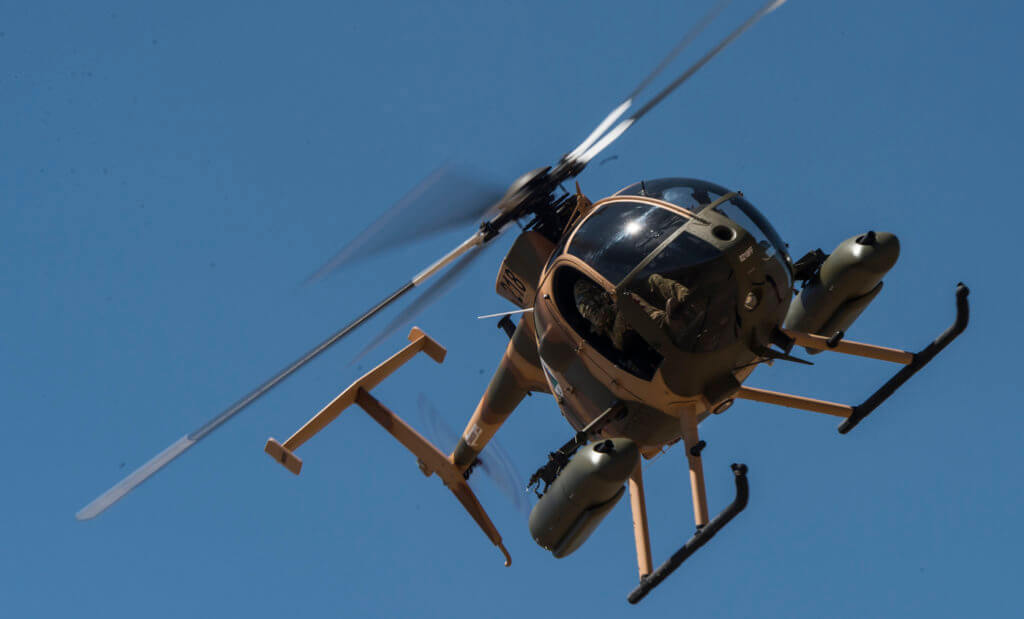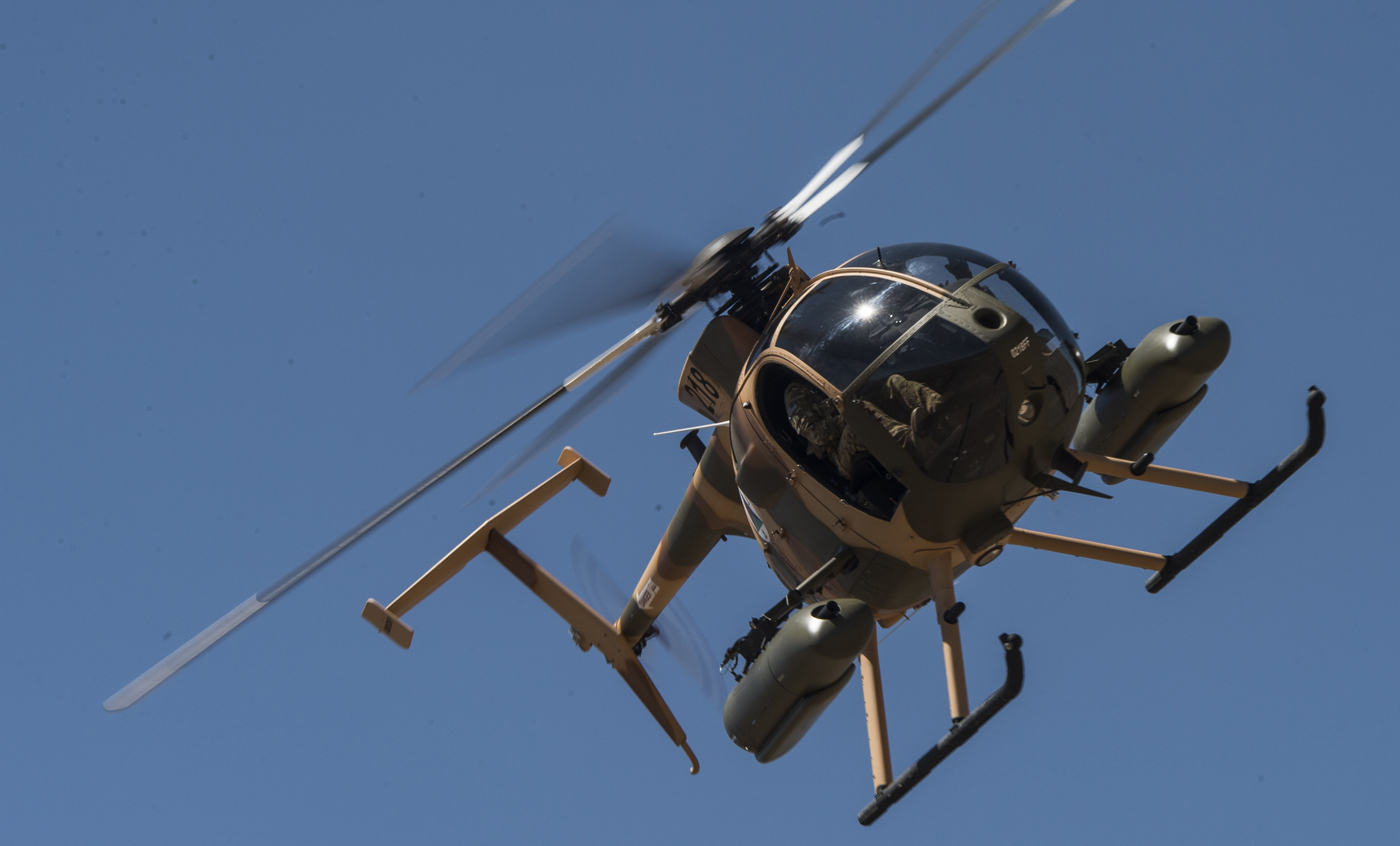As the Taliban surrounded and then streamed into Kabul over the weekend, helicopters began transporting anyone left at the U.S. Embassy across now-hostile terrain to the airport where they could be flown to safety outside Afghanistan.
In a scene eerily reminiscent of the American exit from Saigon in 1975, a U.S. State Department CH-46 helicopter was used to remove some of the final remaining personnel from the embassy on Sunday. U.S. Army Chinook and Black Hawk helicopters also aided in the hasty evacuation as the Taliban swept into the Afghan capital.
A slightly blurry photo of a Chinook hovering over the former Green Zone went viral online — often juxtaposed with the iconic shot of a UH-1 Iroquois evacuating personnel from the U.S. embassy in Saigon — and ran above the fold in many major American newspapers.
The shots of U.S. helicopters in Kabul and Saigon are linked by more than just imagery. The State Department CH-46 used to pluck some of the last U.S. personnel from the embassy in the Afghan capital is a Vietnam-era former Marine Corps helicopter. CH-46s also were used to evacuate the American embassy in Saigon.
Scenes from the Kabul airport on Sunday and Monday were chaotic. With commercial traffic shut down, U.S. personnel were rushed onto Air Force C-17 Globemaster transport jets. In one video from the airport, crowds of Afghans, fearing for their lives before the onrushing Taliban, are seen chasing a C-17 down the runway and climbing up its sides.
A later video shows desperate Afghans, who had clung to the exterior of the aircraft, plummeting to their deaths after it took off. The runway became so strewn with people at one point that AH-64 Apache attack helicopters were called in to perform show-of-force maneuvers and clear the way for the last C-17s to take off.
As the Taliban overran most of Afghanistan last week, photos and video emerged online of their fighters posing in and around captured helicopters the U.S. and allied nations supplied to the Afghan Air Force (AAF). There were videos of Taliban fighters milling around Russian-made Mi-35 Hind attack helicopters and Mi-17 medium transport aircraft, some in questionable states of operation, with missing rotor blades and obvious battle damage. Other appeared in good repair.

On Aug. 13, photos emerged of the first MD Helicopters MD 530F to fall under Taliban control. The battle-damaged aircraft apparently lost a skid in a hard landing and was resting awkwardly on a discarded vehicle tire. Some of the Mi-17 helicopters were shown in a video inside a captured hangar with the rotor blades missing and stowed in a rack nearby.
Joseph Dempsey, a research associate for defense and military analysis at The International Institute for Strategic Studies, kept a running tally of helicopters captured by the Taliban starting Aug. 11.
More videos and photos flooded in of captured MD 530s and several of the refurbished former U.S. Army UH-60 Black Hawks the U.S. government bought for Afghanistan to ween its air force off Russian-built rotorcraft. Some of the Russian-built helicopters were gifted by India.
“At present we do not have a full list of the aircraft that remained at the bases subsequently captured by the Taliban or the condition of those aircraft,” Dempsey told Vertical in an email. “While the Afghanistan Air Force were able to redeploy some flyable airframes in advance, with some fleeing to neighboring Uzbekistan, it is suspected some operational airframes are probably now in Taliban possession.”
Several dozen aircraft, flown by fleeing Afghan troops, were forced to land in Uzbekistan after crossing into that nation’s airspace on Monday, according to reports from the region. At least 22 military airplanes and 24 helicopters made it across the border into Uzbekistan, according to one report.
“Though a number of aircraft escaped to Uzbekistan, it does not appear this was agreed in advance with the Uzbek authorities, and as such the ownership and status of these aircraft is unclear,” Dempsey said.
If the Taliban did capture operational aircraft, it is unclear whether they would be able to put them to military use for long, if at all, Dempsey said. Even the relatively well-organized and funded Afghan Air Force struggled to maintain and repair the aircraft without help from U.S. contractors.
“Assuming the new Taliban authority wish to reconstitute any form of air force the limiting short-term factor will be their access to proficient air and ground crew in order to use them safely or effectively,” Dempsey said. “In the longer term will be access to further spares and expertise to keep them flying and potentially reactive further airframes will be an issue. Training and maintenance were already a known issue for the established Afghanistan Air Force and any new Taliban authority that emerges will be denied the same level of state-sanctioned support, particularly given most aircraft procured were of U.S. origin.”
As of June 30, 2021, the AAF had 167 available aircraft among the 211 aircraft in its total inventory, according to the latest quarterly report from the Special Inspector General for Afghanistan Reconstruction (SIGAR). The AAF operated seven aircraft platforms including UH-60, MD-530, and Mi-17 helicopters as well as the A-29 Super Tucano, C-130 cargo aircraft, Cessna C-208 Caravan, and AC-208 fixed-wing aircraft.
Of 56 Mi-17 helicopters in its inventory at the end of June, 32 were “usable and in country,” according to SIGAR’s latest inventory of the Afghan fleet. The AAF had 43 usable MD 530Fs of 50 and 33 of 45 UH-60s ready to fly. Another 37 UH-60s purchased for the AAF remained in strategic reserve in the United States when the SIGAR report was published July 30. Three of those were to be delivered by July 23 and another three MD 530s to replace battle damaged aircraft were purchased but not delivered.
“Afghan aircraft requiring depot-level and battle damage repairs are transported to maintenance facilities outside Afghanistan,” according to SIGAR. “On June 29, Afghan media reported that 25 helicopters are out of country for repair.”
Even before Kabul and most of the country fell to the Taliban, SIGAR reported that the AAF would struggle to maintain, repair and operate its helicopters once U.S. forces withdrew and took civilian contractor support with them. The aircraft already were overtaxed and operating beyond scheduled maintenance intervals in an attempt to hold back the Taliban tide.
“All aircraft platforms are overtaxed due to increased requests for close air support, intelligence, surveillance, reconnaissance missions, and aerial resupply now that the [Afghan National Defense and Security Forces] largely lacks U.S. air support.,” the SIGAR report said. “All airframes are flying at least 25 percent over their recommended scheduled-maintenance intervals.”
It was known as early as January 2021 “that without continued contractor support, none of the AAF’s airframes can be sustained as combat effective for more than a few months, depending on the stock of equipment parts in-country, the maintenance capability on each airframe, and the timing of contractor support withdrawal,” according to the SIGAR report.









